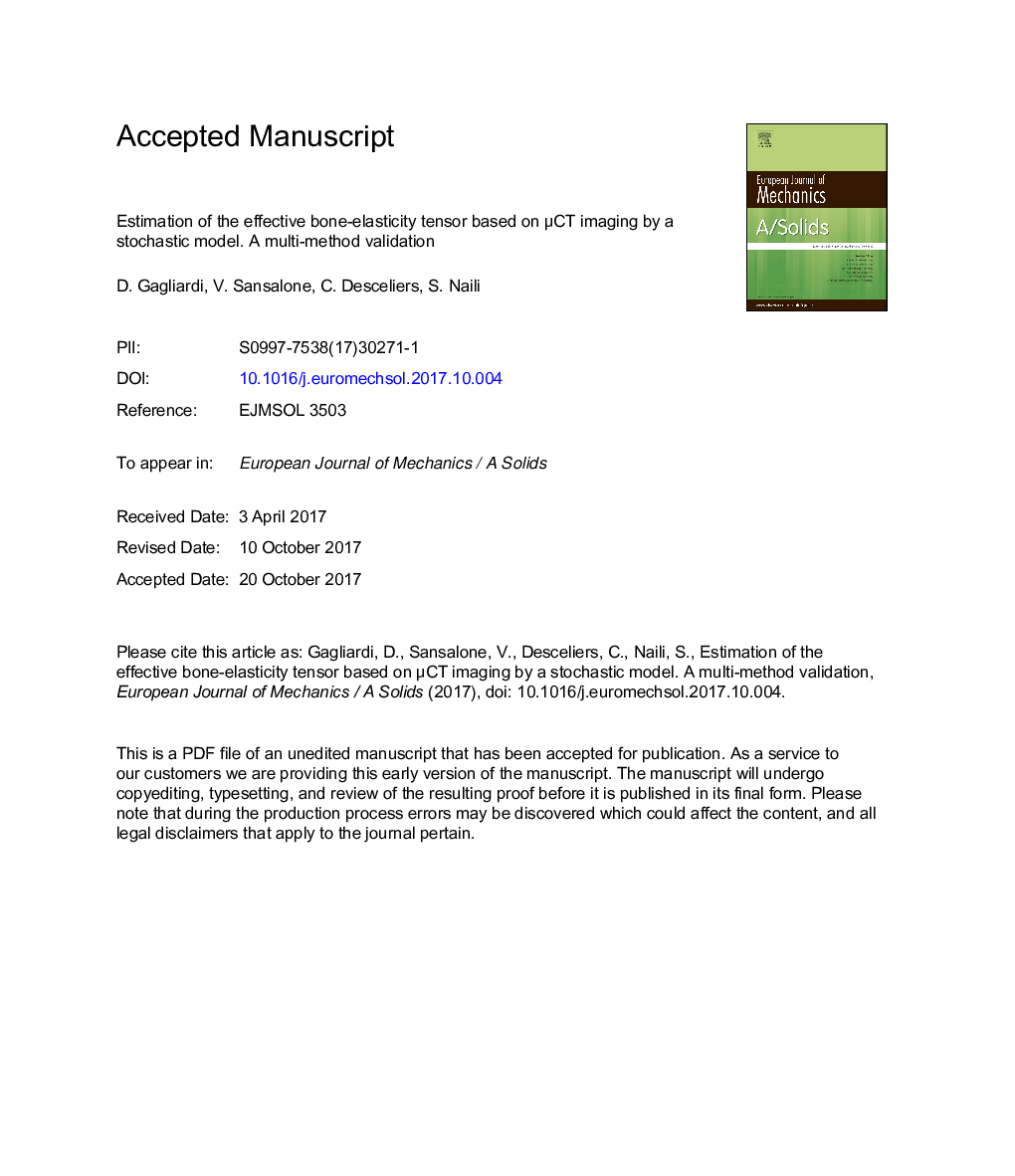| کد مقاله | کد نشریه | سال انتشار | مقاله انگلیسی | نسخه تمام متن |
|---|---|---|---|---|
| 7170258 | 1463178 | 2018 | 63 صفحه PDF | دانلود رایگان |
عنوان انگلیسی مقاله ISI
Estimation of the effective bone-elasticity tensor based on μCT imaging by a stochastic model. A multi-method validation
دانلود مقاله + سفارش ترجمه
دانلود مقاله ISI انگلیسی
رایگان برای ایرانیان
کلمات کلیدی
موضوعات مرتبط
مهندسی و علوم پایه
سایر رشته های مهندسی
مهندسی مکانیک
پیش نمایش صفحه اول مقاله

چکیده انگلیسی
Experimental information was assumed to be given in terms of mean values and dispersions of the average TMD (denoted TMD¯) and HP at the millimeter scale. To this aim, SRâμCT images were used to extract several representative volume elements (RVEs) spanning the whole cortical tissue which, in turn, were analyzed to obtain the required statistical information on TMD¯ and HP. This information has been used for constructing a stochastic multiscale model of cortical bone based on the Maximum Entropy (denoted MaxEnt) principle. This stochastic multiscale model is used in the estimation of the effective elastic properties of cortical bone (CB-SμM) based on continuum micromechanics (μM). In parallel, a deterministic nominal multiscale model of cortical bone (CB-NμM) was developed by using as input data the mean values of TMD¯ and HP. The elastic moduli estimated with CB-NμM has been compared with the average value of the same counterpart obtained with the CB-SμM model. The two estimates differ for less than 1%, proving the robustness of the CB-NμM model to uncertainties. Moreover, the accuracy of the SμM stochastic model has been tested. Estimations of the cortical bone elasticity of each RVE with the μM (cylindrical HP and homogeneous US), has been compared with other estimation obtained through others homogenization techniques: finite elements (FEM) and fast Fourier transform (FFT), both able to account for the real morphology of Havesian porosity and the heterogeneity of the ultrastructure. Results show that (1) the transverse isotropic (TI) elastic μM model correctly approximates the FEM and FFT estimates (â¼98% TI); (2) theâ¯Î¼M model accurately estimates the axial modulus (Y3) in longitudinal direction and the lateral contraction ratio ν31.
ناشر
Database: Elsevier - ScienceDirect (ساینس دایرکت)
Journal: European Journal of Mechanics - A/Solids - Volume 69, MayâJune 2018, Pages 147-167
Journal: European Journal of Mechanics - A/Solids - Volume 69, MayâJune 2018, Pages 147-167
نویسندگان
Davide Gagliardi, Vittorio Sansalone, Christophe Desceliers, Salah Naili,